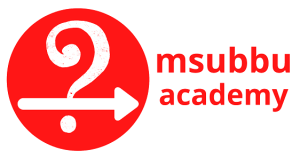Ctrl-Class-3-Summary
07-Aug-2025
Closed Loop Response
Quick Recap
Professor MSubbu taught a class on closed-loop response in control systems, building on previous lessons about modeling, transfer functions, and open-loop response. He demonstrated how to analyze a liquid level control system by deriving transfer functions, calculating response times, and determining controller parameters. The class covered practical applications including how to evaluate proportional and integral control parameters, calculate steady-state errors, and analyze system responses to both setpoint changes and disturbances.
Next Steps
- All students to spend necessary time studying the closed loop response concepts covered in class.
- All students to review the meeting recording and timestamps for better understanding of the problems discussed.
- All students to participate in the potential peer discussion on Saturdays.
- All students to complete the test problems provided by Professor Subbu in addition to the class problems.
SUMMARY
Closed Loop Systems and their Response - Introduction
In the third class, MSubbu introduces the topic of closed loop response, building on previous classes about modeling, transfer functions, and open loop response. He reminds students that understanding step response parameters for first and second-order systems is sufficient to solve open loop problems, as responses to ramp and impulse inputs can be derived through integration or differentiation of the step response. MSubbu plans to cover closed loop systems using a level system example and encourages students to commit regular time to their studies over the next few months to achieve their goals.
Liquid Level Control - Overview
MSubbu explains a closed-loop liquid level control system where the level in a tank is maintained by manipulating one of the input flows (\(q_2\)) based on level measurements. The system includes a controller that compares the measured level with a setpoint, generating an error signal that adjusts a control valve position. MSubbu describes the various components in the control loop, including measurement devices, current-to-pneumatic converters, and gain elements, noting that some elements have fast dynamics represented by simple multiplication terms (\(K\)) while others are represented by transfer functions (\(G\)).
MSubbu explains the components of a control system, focusing on a PI controller with electrical output converted to pneumatic signal. He details the process model development for a tank system, deriving the transfer function with time constant (\(\tau_p\)) equal to the product of tank area and outflow resistance, and process gain (\(K_p\)) equal to the resistance value. MSubbu notes that both inflow variables (\(q_1\) and \(q_2\)) have the same transfer function effect on tank level, with \(q_1\) being a disturbance variable and \(q_2\) being the manipulated variable controlled through measurement feedback, setpoint comparison, and valve actuation.
MSubbu explains the need to analyze a closed-loop system's response to a level change from 2 feet to 3 feet, specifically determining the time required to reach 2.5 feet (50% of the change). He works through the development of the transfer function, showing how to calculate the output-to-input relationship in the Laplace domain by considering all elements in the feed-forward path and feedback loop. MSubbu demonstrates the algebraic process of deriving the transfer function by breaking down the system components and their relationships.
MSubbu explains the equation for a system where the output variable \(H\) can change due to set point changes or load changes (disturbances). He breaks down the transfer functions for both scenarios, showing that despite multiple components, the level variation for set point changes simplifies to a first-order system with a time constant of 0.938. When calculating the time needed for the level to reach 2.5 feet from an initial 2 feet (a unit step input), MSubbu determines it takes only 0.65 minutes, demonstrating how the seemingly complex system can be solved using the standard response of a first-order system to a step input.
PI Controller Parameter Evaluation
MSubbu explains how to evaluate controller parameters from a step response by analyzing the initial controller output before the error changes. He demonstrates that for a PI controller with a step change in error of size 2, the controller output initially jumps to 6 and then increases with a slope of 1.2 per minute. By comparing this response to the standard PI controller equation, MSubbu calculates that the proportional gain (\(K_c\)) equals 3 and the integral time constant (\(\tau_I\)) equals 5 minutes. He also mentions that PD controller parameters can be determined using a ramp input instead of a step input.
Controller Parameters and Signal Relationships
MSubbu discusses controller parameters, focusing on the relationship between proportional band and controller gain. He explains that proportional band equals 100% divided by controller gain (\(K_c\)), making \(K_c\) a dimensionless number. MSubbu works through examples involving standard instrumentation signals (4-20 mA current, 1-5V voltage, and 3-15 psi pneumatic), demonstrating how to calculate output changes for given inputs and how to determine sensitivity and proportional band for controllers.
Control Systems Analysis and Errors
MSubbu explains how to solve problems related to closed-loop transfer functions, steady-state errors, and block diagram reduction. He demonstrates how to calculate the steady-state error for a step change in set point, showing that for a system with a proportional controller (\(K_c=1\)) and first-order transfer functions, the output settles at 3/4 when the set point is 1, resulting in an offset of 0.67. MSubbu also covers how to analyze responses to both set point and load changes, noting that in industrial settings both typically occur and their responses must be added together. He encourages students to review all problems and prepare for upcoming tests.
